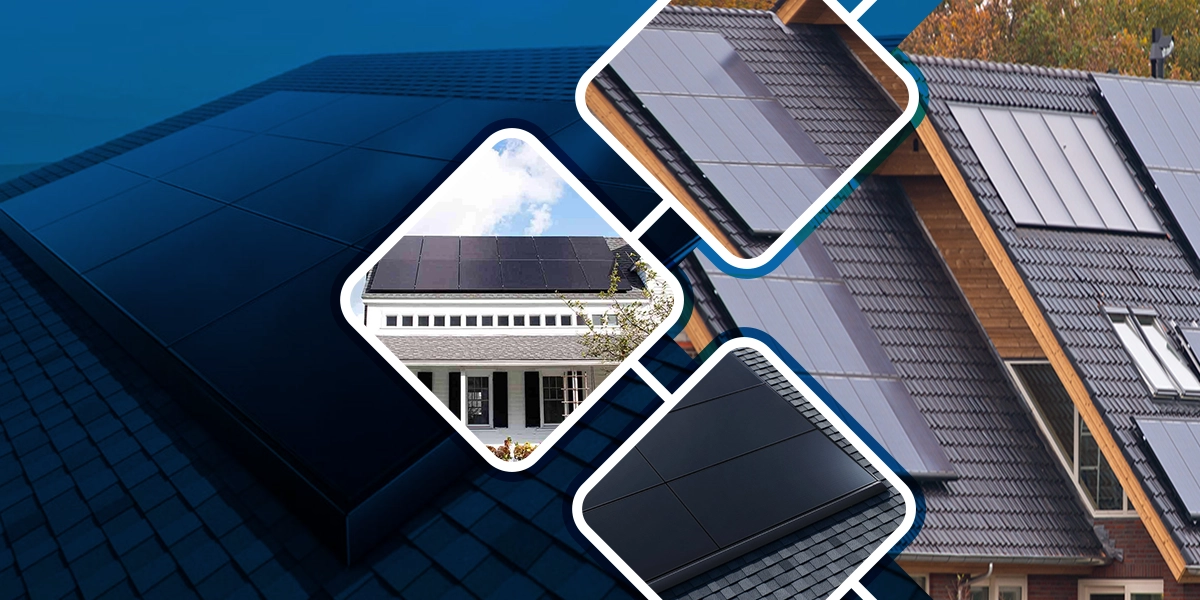- Published On:
Recycling Solar Panels: How It Works And Why It's Important
The solar energy trend is booming, and it is one of the top five renewable energy resources. The question that lay overhead is what happens to solar panels once they have completed their life span of 25-30 years. Although solar has a long lifespan however their efficiency decreases with time. In such a situation, these panels’ proper disposal is necessary to avoid any environmental calamity. Due to the presence of toxic materials in solar panel production, recycling can be a bit difficult and quite an expensive task sometimes.

What Is The Composition Of Solar Panels?
Solar panel composition involves semiconductors like silicon and germanium. On top of the silicon solar cells, thin strips of metals, usually silver, are aligned in a crisscross manner. These metal strips help in the transmission of electricity within solar PV cells.
The solar cells are further wrapped in transparent plastic known as ethylene Vinyl Acetate (EVA). This is further enclosed in another glass layer which is topped off by Polyethylene Terephthalate (PET). The whole structure is supported by an aluminum frame.
Why Solar Panel Recycling Is Important?
Recycling solar panels is a new opportunity to procure valuable raw materials and save the groundwater from leaching toxic material through landfills. The process is beneficial as it reduces the waste of landfills and reutilizes the raw material after recycling solar panels. According to the International Renewable Energy Agency, about $450 million worth of raw material will be extracted from old panels globally at the end of 2030. This amount is equivalent to the cost of materials to manufacture at least 60 million new solar panels. So, recycling solar panels is profitable not only for the planet but also for the economy.

What Parts Of Solar Panels Are Recyclable?
Metals, glass, copper, and silver wires are completely recyclable. However, silicon cells, the main component of solar PV modules, are not quite recyclable. Some companies have the technology to reutilize silicon cells in their original form. While other companies melt silicon cells and extract silicon out of the solar cells. Later on, the manufacturing of new solar panels using this silicon takes place. Thus, jacking up the price of solar recycling.
To curtail the cost of solar recycling, scientists separate silicon cells from EVA using a dibasic ester. No harmful by-product formation takes place during this purpose. That is the main reason why this technique is gaining traction in the recycling solar panels industry. This proves that with the right technique, everything can be recyclable.
What Is The Process Of Solar Panel Recycling?
Solar PV module consists of semiconductors (silicon and Germanium), aluminum frames, junction boxes, glass, heat-sealed components, metals (copper and tin), and plastics. Once they complete their lifespan, dumping of theses panels happens in landfills. Landfills are large pits dug into the earth’s crust outside the urban areas. The landfill needs to be at least two meters above the groundwater table.
Conversely, the second way to dispose of solar panels is recycling. According to International Renewable Energy Agency, solar panels waste is likely to contribute at least 80 million tons of waste by the end of 2030. To stop this, it is better to recycle solar panels than to dispose of them in landfills.
The first step in recycling is dealumination. This involves the removal of the aluminum frame and the junction box from the panel. Afterward, a cutter usage takes place to cut the panel into two parts. The panel insertion then takes place in the delimitator which separates the glass from the panel. Then it is sent to the shredder that shreds the panels into the size of almost 10 millimeters. With the help of the Sector turbine, all the heat-sealed solar panel components removal takes place.

In the final step, three-stage vibrating screen usage takes place. With the help of this screen, the metals, silicon, and plastic sorting into three separate bags take place.
Are Solar Panels Toxic In Nature?
Crystalline silicon is the major element in solar manufacturing. This substance is non-toxic. The toxic materials usage that are of utmost importance in the solar panel’s formation usually include lead and hexavalent chromium. But their minuscule quantity makes them nonlethal for human consumption. This quantity of toxic material is defined by California’s Restriction of Hazardous Substances (RoHS) law. According to this law, the limit of the hazardous substance should not exceed more than 0.1% in any human consumption product. While cadmium is an exception to this limit, it should not surpass 0.01% by weight.
In the same way, the extraction of silicon from the quartz results in the formation of silicon tetrachloride. When handled improperly, it may result in burning human flesh. The additional solar panel toxic material in Thin Film panels may include cadmium telluride and copper indium selenide. However, certain toxic chemicals are absolute in the panel manufacturing process, but the toxicity of these chemicals is subdued by the beneficial impact of solar panels on the environment.
What Are The Methods To Recycle Solar Panels?
Solar panel recycling is not a new term but it is gaining mainstream traction due to the global climate crisis. People are not only moving towards sustainable energy sources but also finding ways to dispose of panels. Below are some of the ways to recycle solar energy panels:
Chemical Recycling:
This process separates the chemical components of a solar panel by using the technique of heating and chemical processes. Mechanical recycling of solar panels involves the separation of solar components based on their physical value. While in the chemical method, the separation takes place at molecular and sub-molecular levels. The by-product of the chemical process usually constitutes the emission of hazardous gases. This is the main reason why this method mostly takes a backseat in the recycling solar panels process. But still, some companies employ chemical processes to extract silver wire from the panels. The main purpose of this wire is the transmission of electricity from silicon cells to solar panels.
Mechanical Recycling:
Mechanical recycling is a method in which materials are physically broken down into their original components. It is an effective waste management technique that commonly takes place to recycle materials such as plastics, metals, and paper. Mechanical recycling involves sorting, shredding, and separating to convert waste into reusable materials.
Shredding is the subsequent step in mechanical recycling. It involves shredding materials to make them easier to handle and process. Depending on the recycling type, various sorts of shredders can be used. For plastics, for example, shredding takes place using granulators, which generate small plastic particles. By using these new products creation takes place.
After shredding, material separation takes place. Metals, for example, can be separation takes place using magnetic separation, whereas plastic separation takes place on a density basis. This separation process is critical for ensuring that recycled materials are of high quality and can be used to create new products. Mechanical recycling is a viable option for long-term waste management. This is a much simpler and more cost-effective method than chemical recycling.
Recycling solar panels is essential for minimizing environmental impact and conserving valuable resources. By reusing materials like metals, glass, and silicon, we reduce landfill waste and support the sustainable growth of renewable energy. Embracing effective recycling methods ensures that solar energy remains a truly green solution for the future.
Related Articles:
Maybe you’ve heard of solar panel kits, but you don’t know exactly what they are and how they’re different from solar installations. Well, they are, kind of. Here’s what you need to know about solar panel kits.
The rooftop solar energy system is an ideal bird nesting spot for pigeons, sparrows, and other pest birds. Solar investment is worth it for you.
If you are searching for a budget-friendly and sleek rooftop energy system, Tesla solar panels are a good option. However, their efficiency rating is within the average range. So, if you live in a sunny state, you can choose them for aesthetics and cost-effectiveness. Explore the specifications and costs of Tesla solar panels. Also, we will compare them with other brands to help you decide about these panels.



